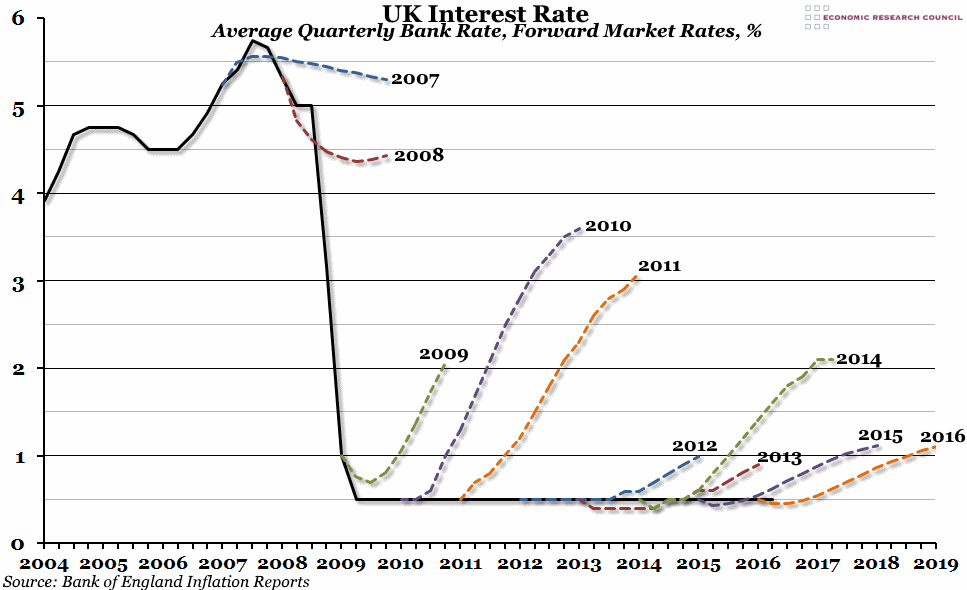Week 31, 2016: UK interest rates
Summary: UK interest rates remain at the historic "emergency" low of 0.5% set by the MPC in March 2009, and financial markets have consistently overestimated the likelihood of a rate rise since then. In the context of the expected reduction in the base rate tomorrow, the latest forecast is likely to once again prove overly optimistic.
What does the chart show? The black line on the chart shows the official Bank Rate (the base interest rate set by the Bank of England), averaged out over each quarter, since the beginning of 2004. Each dashed line shows the forecast for future interest rates shown in each of the last ten February Inflation Reports. These estimates are based on the overnight swap rates in the three weeks leading up to the Report.
Why is the chart interesting? UK interest rates were set at a historic "emergency" low of 0.5% in March 2009, and have remained at this level since then. Expectations of the financial markets, based on the Bank of England's Inflation reports, were initially for a quick economic recovery and rate rise. Although markets have predicted longer periods of the base rate remaining at 0.5% over time, and slower base rate increases, forecasts have consistently proved too optimistic. The 2016 forecast, which was produced pre-Brexit, showed a small temporary reduction below 0.5% followed by a quick recovery.
This provides interesting context for tomorrow's interest rate decision from the Bank of England's Monetary Policy Committee (MPC). The consensus appears to be that the MPC will reduce the base rate to at least 0.25% as part of a wider stimulus package that could also include expansion of the Bank's Quantitative Easing Programme. A further reduction in the base rate would potentially provide a boost for the housing market through lowering the cost of mortgage debt, and generally stimulate the economy through reducing incentives to save and lowering the cost of borrowing. Interestingly, the decision to reduce interest rates would come at a time when inflation is expected to increase sharply, driven by increased import costs following the devaluation in the pound post-Brexit.
It remains to be seen how long the base rate will remain at this new level, if indeed the base rate is cut at all. However, it seems likely that the latest forecast will once again be shown to be overly optimistic, and the base rate is likely to remain at historic lows for a longer period than markets expect.





 Wednesday, August 3, 2016 at 12:33PM
Wednesday, August 3, 2016 at 12:33PM